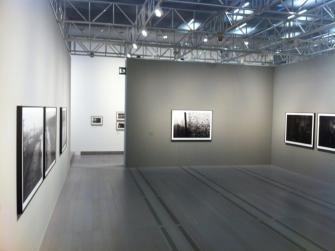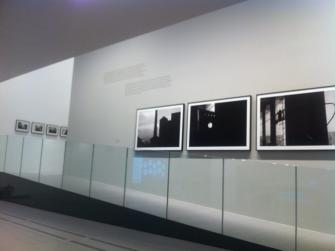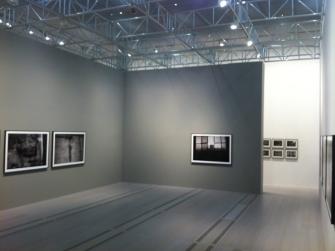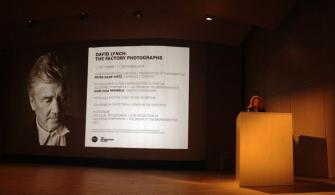Lynch’s films have a devoted following; not many people, however, are aware of his photographs. The exhibition at The Photographers’ Gallery in London presents a treasure trove of images: ninety photographs compiled by an artist whose perception of the world, whose power of imagination and creativity has produced some of the most exciting and original films of our time. An artist who has something to say: about reality and dream, about the abysses of emotion and desire, about the dark recesses of the mind; one who is able to tell stories emotionally and intellectually. These photographs exude David Lynch’s sense of aesthetics, his passion for beauty and the dark, the magical, the mysterious. They reveal his unmistakable signature: surreal, magical imagery resembling dream sequences in its subjects, moods, and shades of color. The otherworldly spaces, the cypher-like symbols, the strange metamorphoses, the obsession with machines: they remind us of the labyrinthine, enigmatic, and ominous qualities of his films.
The black and white photographs show factories in Berlin and environs, in Łódź, Poland, in New York City, New Jersey, and England: bewildering passages, decaying walls, industrial waste, and detritus. Devoid of nature, the dying, manmade structures are actually being overtaken by nature’s innate power. They are haunting cathedrals of a bygone industrial era, remnants of a lost world, monuments of a past when factories were proud milestones of progress. Everything seems pregnant with meaning; the place itself, whether romantically enchanted or ominous, holds creative potential. Functionless, disintegrating, rundown, the “factory” appears in Lynch’s “personal narrative” as a refuge, an enclave, where something may be possible that does not conform to the rules of a perfect high-tech world.
With a few exceptions these photographs have not been exhibited previously. Each one of them has the same dimensions (11 x 14 inches / 27.9 x 35.6 cm) and is displayed in a classic matte and dark wooden frame. The gelatin-silver prints are superb in terms of aesthetic quality. As if the soot or the vapors and fine dust of the place had deposited themselves onto their surfaces: the originals look like charcoal drawings, haptic, the graphic lines in inky black and shades of gray.
David Lynch, an icon of American film, born in Missoula, Montana in 1946, lives in Los Angeles: he is a director, screenwriter, producer, and at the same time a painter, musician, designer—and photographer. He started out with painting, enrolling at the Pennsylvania Academy of Fine Arts in Philadelphia in 1966, and then went on to create his first short film by animating his painterly work. After that Lynch moved to Los Angeles; his first film, Eraserhead (1977), became a classic. For The Elephant Man (1980), Blue Velvet (1986), and Mulholland Drive (2001), Lynch received Oscar nominations for best director. Dune (1984), Wild at Heart (1990), Lost Highway (1997), The Straight Story (1999), Inland Empire (2006), and the TV series Twin Peaks (1990‒91) won many awards, such as France’s César Award for Best Foreign Film, the Palme d’Or at Cannes, and the Golden Lion for Lifetime Achievement at the Venice Film Festival.
Petra Giloy-Hirtz














